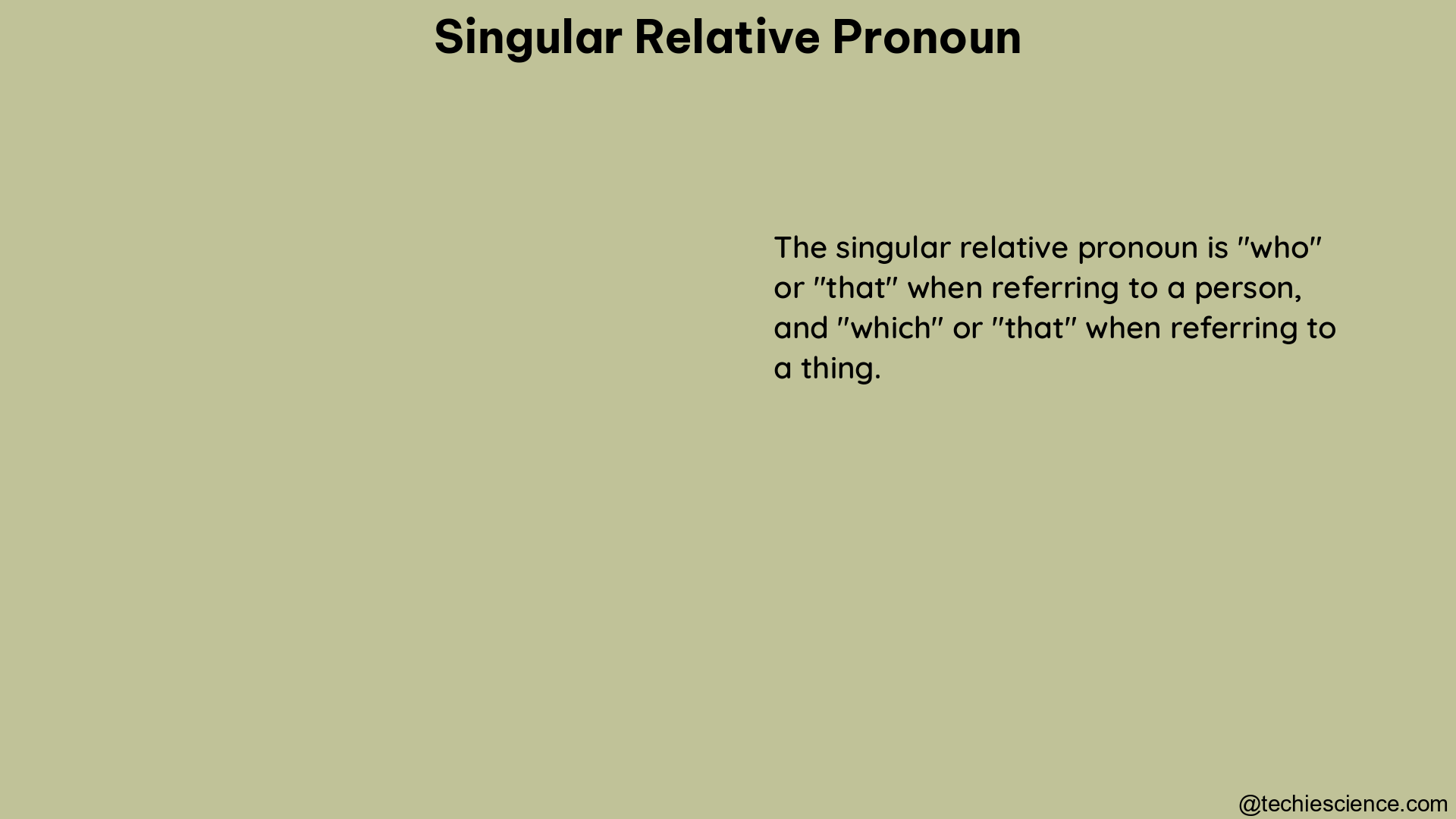Singular relative pronouns are a crucial component of the English language, serving as the link between a main clause and a subordinate clause. These pronouns play a vital role in constructing clear, concise, and grammatically correct sentences. In this comprehensive guide, we will delve into the intricacies of singular relative pronouns, exploring their usage, grammatical specifications, and advanced applications.
Understanding Singular Relative Pronouns
Singular relative pronouns are a type of pronoun that introduces a relative clause and refers to a singular noun. These pronouns help to connect the main clause with additional information or details about the subject, object, or possession. The main singular relative pronouns in English are:
- Who: Used for people as the subject of the sentence.
- Whom: Used for people as the object of the sentence.
- Whose: Used to indicate possession by people or animals.
- That: Used for people, animals, or things in defining relative clauses.
- Which: Used for animals or things.
Grammatical Specification

Who and Whom
The pronouns who and whom are used specifically for people. Who is used as the subject of the sentence, while whom is used as the object.
Example:
– The person who phoned me last night is my teacher.
– The person whom I phoned last night is my teacher.
Whose
The pronoun whose is used to indicate possession by people or animals.
Example:
– The student whose phone just rang should stand up.
That and Which
The pronouns that and which are used for animals or things. That can be used in defining relative clauses for people, animals, or things, while which is typically used for animals or things.
Example:
– The car that hit me was yellow.
– The car which I drive is old.
Examples
Defining Relative Clauses
Defining relative clauses provide essential information about the noun they modify, and they cannot be removed without changing the meaning of the sentence.
- The person who phoned me last night is my teacher.
- The car that hit me was yellow.
- The car which I drive is old.
Non-Defining Relative Clauses
Non-defining relative clauses provide additional information about the noun they modify, but they can be removed without changing the core meaning of the sentence.
- Mrs Pratt, who is very kind, is my teacher.
- The car, which was a taxi, exploded.
Advanced Details
Using “That” for People
While some grammar guides may suggest avoiding the use of “that” for people, there is no grammatical reason to do so in defining relative clauses. The pronoun “that” can be used for people, animals, or things in these contexts.
Example:
– The person that phoned me last night is my teacher.
Formal Usage of “Whose”
In more formal styles of writing, the pronoun “whose” can be used to indicate possession for things, not just people or animals.
Example:
– The decision whose outcome we are waiting for is crucial.
Interchangeability of “That” and “Which”
In some cases, the pronouns “that” and “which” can be used interchangeably, but “that” is generally preferred in defining relative clauses.
Example:
– The car that I drive is old.
– The car which I drive is old.
Reference
- English Club – Relative Pronouns
- Cambridge Dictionary – Relative Pronouns
- Get It Write Online – Verb-Relative Pronoun Agreement
Hey! I am Arpita Bose Roy. My qualifications are M.A. in English with B. Ed. in both general education and special education. I have 2 years of experience as a “language analyst” at IIT Kharagpur and 4 years of experience as an “Academic Content Developer” at IIT Kharagpur. Currently, I am working as an academic writer at Lambdageeks.